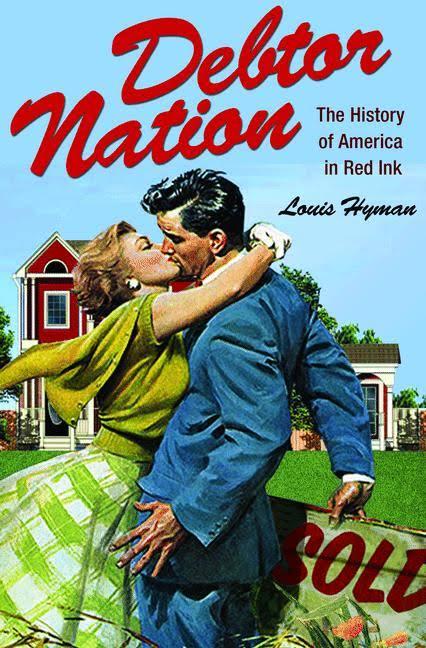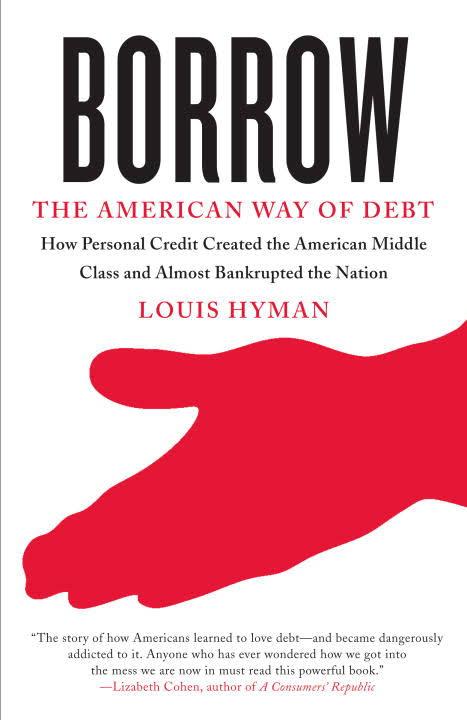What the rise of the gig economy means for the American Dream
Worried about the stability of your job? Feeling like your wages don’t stretch as far as they used to? You’re not alone, if you’re a middle-class or working-class American.
“As many as 40 percent of Americans now have to cobble together income from various sources,” says Louis Hyman, associate professor of economic history at Cornell University’s School of Industrial and Labor Relations, and author of Borrow: The American Way of Debt, and Debtor Nation: The History of America in Red Ink.

Hyman’s current focus is the history of temp labor and the gig economy in the United States, how it came to be such an outsized part of the work force, how it has created both insecurity and opportunity, and how it could yet be enhanced, with the right government investment, to encourage innovation and a better work-life balance for many Americans.
“In the post-war, that magical period from 1945 to 1970, wages went up year after year — median male wages went up almost 50 percent,” Hyman says. “And since then they basically have stagnated. They haven't gone up at all.
“So, when people borrowed in the post-war era, they were able to pay back what they borrowed. That changed in the 1990s … and it wasn’t because people were borrowing more. It was because they were making less money. So, if in the post-war era, the One Percent paid the 99 Percent in wages, after roughly 1980, the One Percent just lent them money. And this is the fundamental dynamic of what’s changed in our economy.”
The past half century has seen an extraordinary transformation, Hyman says, from stable employment in large corporations, to an increasing reliance on temp labor.
“When I started working on this project about temp labor, I wanted to understand, well, what happened from top to bottom in our economy, that moved it from a world of stability to a world of insecurity?,” Hyman says. “And for good and for bad, so that the people at the top felt liberated from the old bureaucracy. In Silicon Valley, we hear all about the innovators and entrepreneurs, unleashing creativity and things like that. For those people, this is great, right? They can make a lot of money and do amazing things. But for regular folks, it's not so great. They are less able to plan for the future. And even if they are able to get enough money together for their bills, they still feel an overwhelming sense of fear and uncertainty that people in the post-war didn't have to contend with.”

“Along with the restructuring of the corporation comes the restructuring of work,” Hyman says. “Executives begin to lose their jobs. Consultants come in. They sort of streamline and restructure, and you can see the origins of downsizing in the restructuring that we all went through in the ‘80s and ‘90s, begin at this moment. And into this gap, there's a demand for a workforce that can meet the greater fluctuations in the market. So markets become more volatile in the ‘70s for lots of reasons, like the oil crisis. And people look to temp labor forces to be a buffer between that uncertain market and a stable core workforce. Temp workers come in increasingly as a way to guarantee stability in an era of crisis and uncertainty. But then, by the ‘80s and ‘90s, temp work forces are just seen as an important component, and they begin to replace regular workers.
“There’s a great unraveling, and there's a great forgetting what made possible the post-war life and forgetting that there's a deep connection between security in our economic lives, and security and us as a democratic society, as people who are happy, and vote reasonably and don't, you know, worry about the future as much. Across lines of class, across lines of education, we are all moving towards this freelance economy, this unstable economy. And for some people, it works out great if you're a consultant. You can make tons of money in just one day. And if you're an undocumented worker who's working in very dangerous conditions outside the surveillance of labor law, it's not so good.”

“Back in the 1930s, when there were homeless encampments in Washington, D.C., very much like the homeless encampments that are now under the I-280 in San Francisco, the federal government invested capital in new industries to create jobs for millions of people. They created tax codes that redistributed from the rich to the poor. Republicans like to talk about how great everything was in the 1950s. Well, the top marginal tax rate in the 1950s was 93 percent. It's a very different economy when we agree as a society that the very wealthiest should give back to the poor and rebalance the scale somewhat.”

The top one percent in the United States now has more privately-held wealth than the bottom 90 percent, economist Joseph Stiglitz has warned. And the bottom 90 percent hold about 70 percent of all debt. Meanwhile, the top marginal tax rate is now 39.6 percent, and neoconservatives have spent decades pushing, with considerable success, for less government spending on social programs that could help those on the margins get a leg up. The neoconservative argument has long been that tax breaks for businesses and for the affluent lead to investment that creates jobs.
Sometimes, that's true, but not always in proportion to the opportunity costs. And with a significant number of Americans feeling economically squeezed and disoriented, it's no surprise that lashing out against business as usual has been a central theme in this election cycle, on both the left and the right.
“You know, it doesn't really matter if you've a billion dollars or not if a mob comes to your house, or that democracy fails,” Hyman says. “I mean, I would hate to think that there's anybody who thinks if the cost of their wealth is the end of American democracy, that that's a worthwhile cost. So the real question is, what do we do as a society to rectify that, to create systems that allow us to have the freedom of work … where there’s at least some minimal level of safety and security?”
One obvious step, Hyman says, would be to put to work the "great sloshing pool of money" that investment banks and companies have been keeping on the sidelines since the financial crisis. Pay workers more so they have more to spend, and invest in creative risk-taking and innovative ideas, as happened during the New Deal.
The New Deal’s Reconstruction Finance Corporation not only helped light up America — moving it from 10 percent of homes having electricity in 1930 to more than 60 percent a decade later — it also funded research in the Defense Plant Corporation.
“It was fundamentally about investment in edgy technology, so things like aerospace, aluminum extraction, synthetic rubber were all brought to scale,” Hyman says. “Aerospace before 1939 had fewer people working in it than worked in candy manufacturing. And after World War II, the aerospace industry was four times the size of the pre-war car industry. This is incredible scale and scope of an endeavor, to utterly transform the economy in about five years, by using idle capital.”
What does that mean for the current moment in America’s economic life?
“One of the reasons we are always being solicited to borrow more money is because nobody knows where to invest this capital,” Hyman says. “There's so much capital out there, and they don't know where to put it. It's hard for us to imagine as normal people, but for the big players in the global economy, the pension funds, the hedge funds the bazillion billionaires, they're desperate to find an outlet for capital. And right now, the best outlook for capital is our home mortgages and our credit card loans. And until we provide them with better outlets, like we did during the 1930s and ‘40s, to invest in aerospace and more cutting edge technology in industries that employ millions, it's going be very hard to get our economy going again. And fundamentally, this is how capitalism has to work. It has to be a virtuous cycle, where capital comes into businesses, is invested and creates new jobs.”
This, Hyman argues, rather than building a wall and keeping out immigrants, is what has made, and can continue to make, America thrive.
“People who think that America is white, and you're born here, and it's your blood tie — it's a certain vision of America that's about that looks like other nations,” he says. “But I think America is special. And what's special about it is that it has this abstraction to it, that we're people who are ruled by law, who make our laws, who come from all over the place, and we decide on what that American experiment is going to be. And I think that people who want to be a part of that, I’d say come on down and let's make it happen."
“I think we always have choices about who's century it's going to be. And we can make choices that empower people and create a more inclusive more democratic society. Or we can make choices that might seem a little easier, but ultimately will destroy the society that we've worked so hard to create. And it's fragile, and special, and we need to preserve it.”
